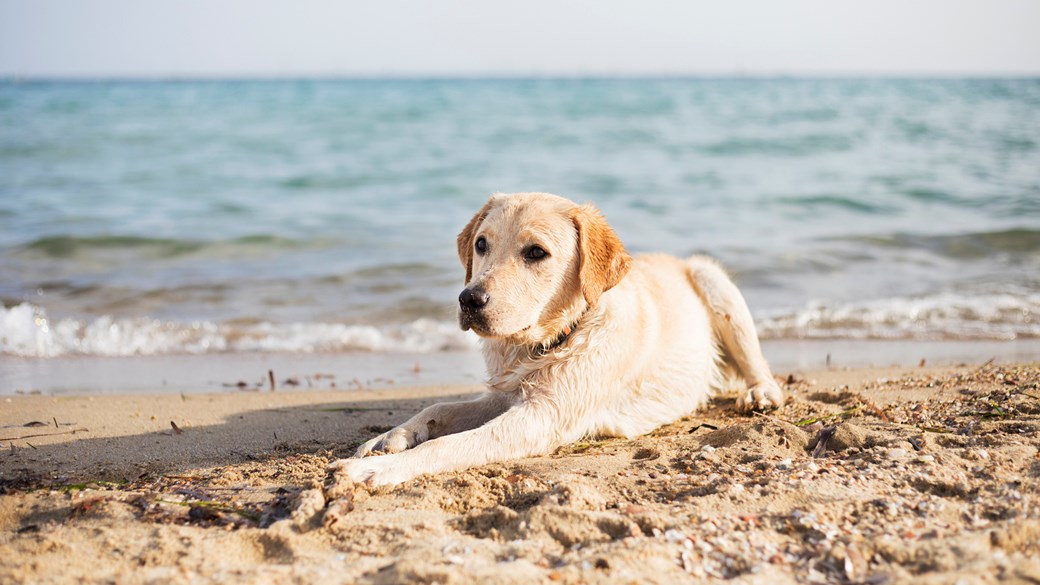
Summer Tips for Dogs
As the summer gets into full swing, here are some summer tips and facts: from heatstroke to travelling with your dog in the car.
Preventing heatstroke in dogs
Heatstroke occurs when your dog cannot lose excess heat, causing the body to reach dangerous temperatures. A body temperature rise of only 4 degrees can be enough to kill! Being in an environment that is too hot or humid can lead to heatstroke, especially if your dog is running or playing. This can include but is not limited to, a hot day, being enclosed in a warm room (conservatories especially can become lethally hot very rapidly, even on cool but sunny days), and being left in the car.

Preventing sunburn in dogs
Dogs can get sunburn which can lead to skin cancer in dogs. The development of cancer often requires surgery for treatment to remove the affected area. Early detection is key to managing skin cancer – keep a close eye on your dog’s skin changes. If you notice any changes, contact your vet as soon as possible.
You can help minimise the risk of sunburn in your dog by keeping them inside on very sunny days or by keeping them to the shade or apply dog-friendly sunscreen. Just like us, dogs can have protective sunscreen applied to protect skin from sun damage. Apply it to the nose and ears especially, but anywhere where the fur is thin. If your skin would burn, so would theirs.
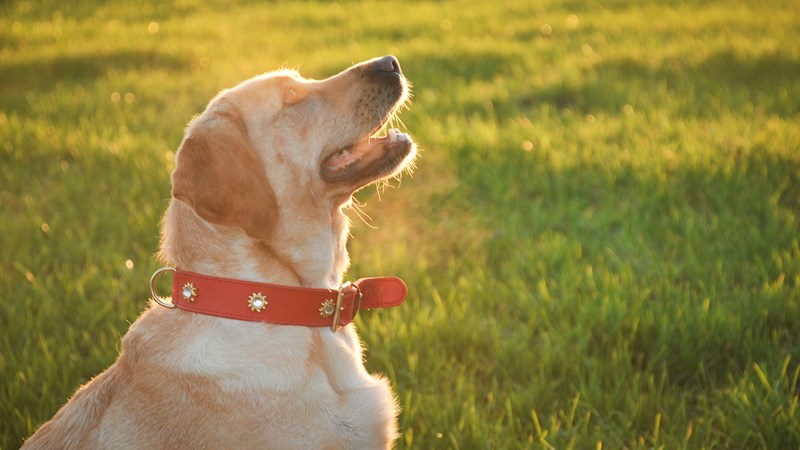
What is the hot pavement test?
Walking dogs in hot weather can be dangerous, which is why it's best to try the hot pavement test before a walk. If you can't hold your hand on the hot pavement for longer than five seconds, it is too hot for your dogs to walk on.
Leave walks to the early morning and late evening to keep your dog cool on a walk, and make sure to pack a water bottle so your dogs can drink occasionally. If you are concerned about your pet in the heat, contact your local practice as soon as possible.
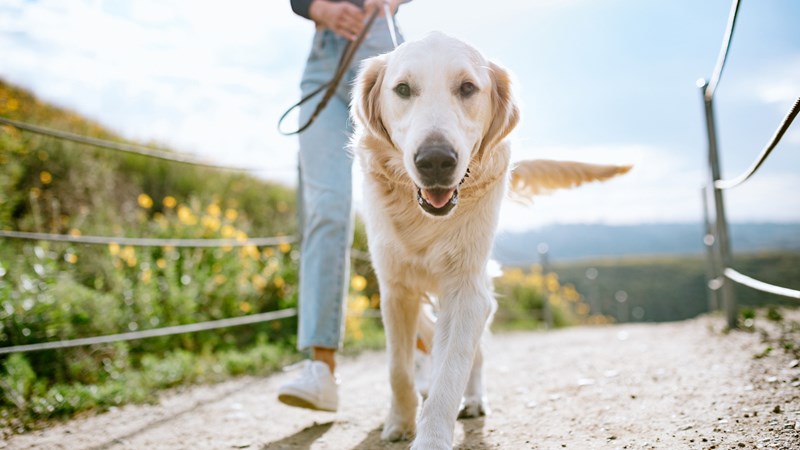
Your dog travel guide
Make sure your dog is happy when travelling. Knowing the risks of travel can help you make sure that your trip is great for everyone.
There are a lot of risks travelling with your dog in the car in the summertime, such as car sickness, and the risk of heatstroke if your car gets too hot. When travelling in the car with your dog, it is important that your dog stays out of direct sunlight - using a window screen in the car will help reduce the risk of heatstroke.
It is also important to know that it is legally required that your dog is restrained in the car by a specific harness or in a secured crate; failure to do so may invalidate your car insurance.
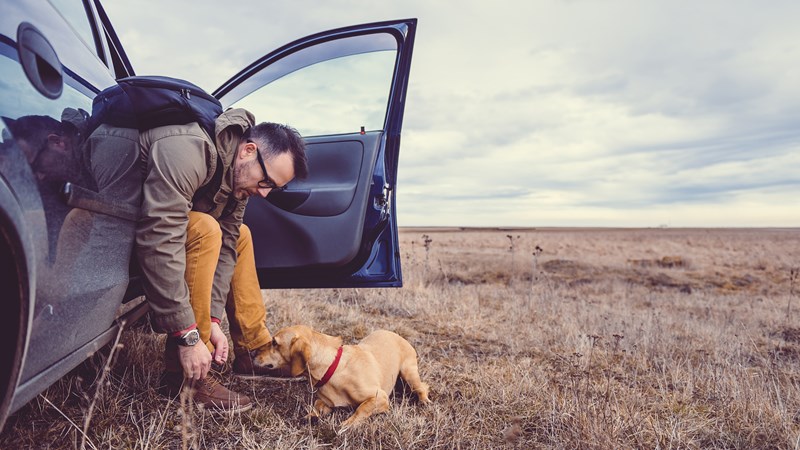
Leaving your dog behind
Dogs like company, and a mainstay of care is to find an arrangement where they will still get enough walks, care and attention. If you can find a trusted friend, neighbour or family member, or a professional house sitter, to look after your dog in their normal environment while you are away, this is a great option.
Dogs are often happy to stay at another house whilst you’re away. A popular alternative to at-home care is holiday kennels for dogs, where they'll be looked after 24/7. This can be stressful for dogs who are not used to it, as there is often a lot of noise and new smells, so getting them used to it from a young age if possible is preferable.

Bee and wasp stings in dogs
Your dog is more at risk of being stung by a bee or wasp between spring and autumn. Stings often occur on the paws when a dog accidentally treads on an insect. Some dogs also enjoy chasing flying insects and if they catch a bee or a wasp, they can get stung on the face or in the mouth.
There are plenty of symptoms to look out for, and thankfully there are plenty of things that you can do to treat your dog if they are stung.

Parasites in dogs
While fleas can be a problem year-round, their numbers often see a peak in summer. This is due to the warmer weather, and the increased interactions between dogs as they spend more time outdoors. Tick numbers also rise between spring and autumn, and these nasty bloodsuckers can carry a range of diseases such as Lyme disease, as well as causing irritations of the skin.
Your vet will be able to help you treat flea infestations, which will involve treating your pets and your home by using preventative treatments which your vet can provide. Tick treatment can also involve removing the tick, but this should be done carefully using a tick hook/remover to avoid leaving any of the tick mouthparts in the skin.
Preventing parasites using treatments available from your vet, and as part of our Complete Care Health Plan, is the best way to protect your dog from parasites this summer.

Can my dog go swimming?
Some dogs loathe water, but others can’t get enough of it. Though it is important to consider that not all dogs can swim, particularly flat-faced breeds as they can struggle to keep their nose above the water.
It is also worth considering getting life vests for dogs, especially if you’re on a boat or your dog is not a strong swimmer. Seawater can hugely upset their tummies so offer them plenty of fresh water to drink and stop them from trialling a lap from the sea. Currents are impossible to see from the beach. If your dog is ever in trouble, call the coastguard and avoid getting into the water.
Don’t force your dog to swim if they don’t want to, just always be mindful of other ways to keep your dog cool. Dogs who frequently swim are also prone to ear infections, so make sure dogs are thoroughly dried after a swim and use ear cleaners from your vet to help keep dirt out and infections away.
Look out for blue-green algae which can clump together and sit on the surface of the water. They are most abundant during periods of hot, sunny weather and low rainfall in the mid-to-late summer months. Dogs can be poisoned by this algae, and if you suspect that they have consumed any then contact your local vet immediately.
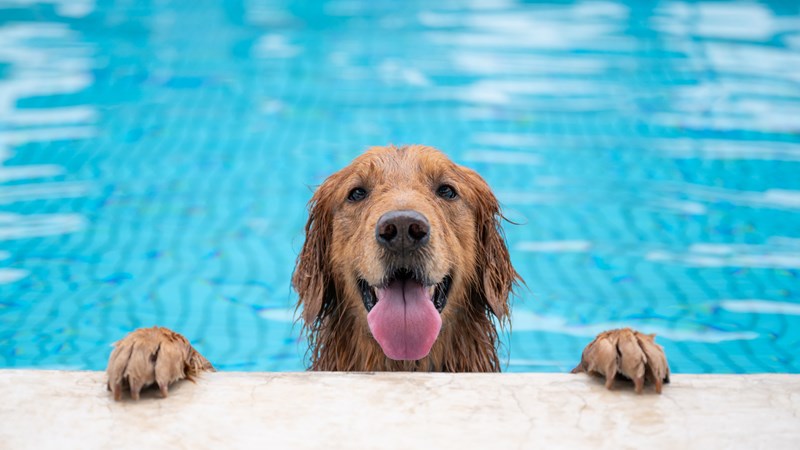
How can grass seeds affect my dog?
Grass seeds are like tiny arrowheads that can get caught in your dog’s paws, eyes or ears and is an extremely common problem during the summer months especially in breeds with hairy ears and feet such as Cockapoos and Spaniels. They will get stuck in your pet’s coat and can then penetrate the skin.
Your pet may show signs of discomfort, often shortly after a walk. Signs depend on where the grass seed got stuck and can include violent shaking of the head, rubbing at the eyes, chewing at the feet or sudden onset sneezing. Other signs are sudden onset lameness and swelling between the toes.
To help prevent grass seeds getting stuck, you can trim the fur on your pet's paws and around their ears, check your dog for grass seeds routinely following a walk, and avoid meadows and woodlands where these grasses commonly grow.

Read more expert pet advice
From healthy diets to preventing fleas, find free and helpful pet health and training advice to care for your pet.
